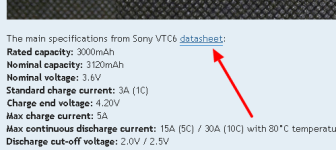thunderheart
100 W
Original article: https://www.thunderheartreviews.com/2019/03/sony-vtc6-18650-3000mah-30a-test.html
Sony US18650VTC6 (or just VTC6) is a high drain 18650 size Li-ion cell which supports discharge rate up to 15A if no temperature control is used and up to 30A with 80°C temperature cut.
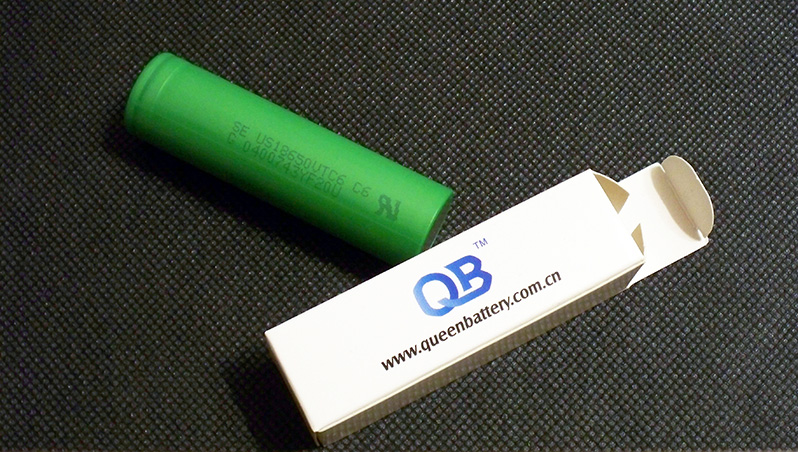
The battery was bought from my reliable supplier (Queen Battery) and tested with ZKETECH EBC-A20 and a self-made battery holder. It's a PC-connected battery tester supporting 4-wire measuring and discharging at up to 20A.

I've used version 3.0 of my battery holder based on 0.5mm thick pure copper terminals

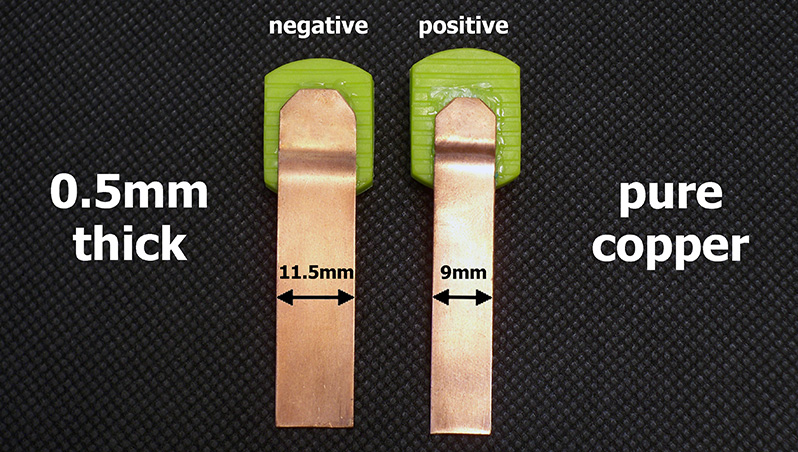
I've followed all the prescriptions of the IEC61960-2003 standard concerning battery's capacity measurement. Before each discharging cycle each battery was charged at standard charge current mentioned in its datasheet to charge end voltage. Before each discharging or charging i've held a 1-1.5hrs pause. The environment temperature was 23.0-24.5°C. To be sure in results i've done each test minimum twice (usually 3-4 times).
Sony US18650VTC6
The cell is marked as
SE US18650VTC6 C6
G 0400743YF20U

The main specifications from Sony VTC6 datasheet:
Rated capacity: 3000mAh
Nominal capacity: 3120mAh
Nominal voltage: 3.6V
Standard charge current: 3A (1C)
Charge end voltage: 4.20V
Max charge current: 5A
Max continuous discharge current: 15A (5C) / 30A (10C) with 80°C temperature cut
Discharge cut-off voltage: 2.0V / 2.5V
AC impedance at 1KHz: 8-18mΩ
Weight: 46.6±1.5g
The measured DC IR of fully charged cell at 3000mA was 15±1mΩ (measured using EB Tester Software).
My cell's weight was 46.83g
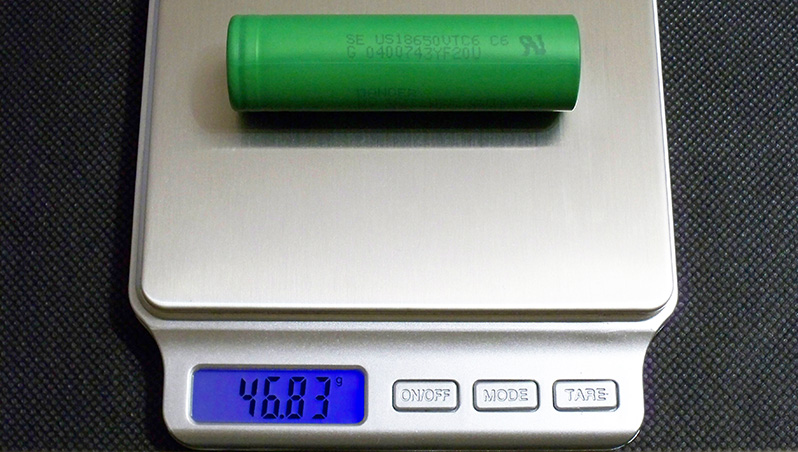
Capacity test results
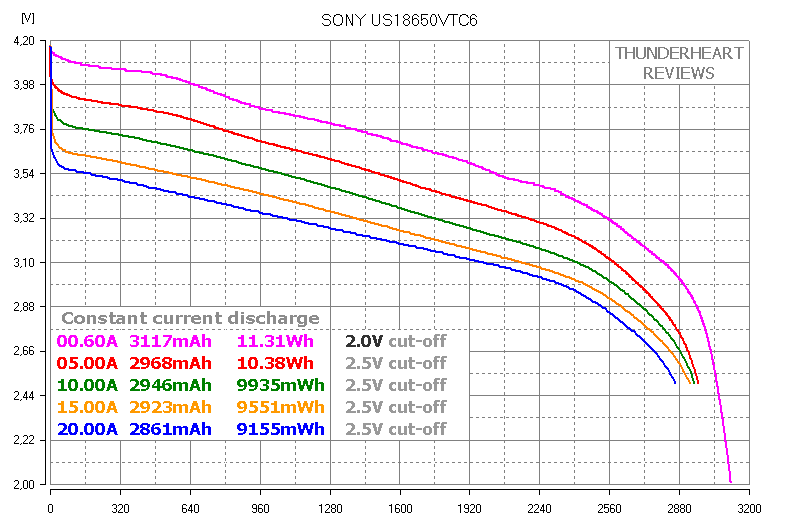
High current curves are excellent, there is nothing to say. The only thing which seems strange to me is the 2.0V discharge cut-off voltage Sony uses at 0.2C. Why 2.0V? I think it's just to push the nominal capacity a bit higher because nobody gonna use VTC6 at 0.6A discharge rate. I can't find any other explanation for this.
Here is the video version of this review:

Check out my YouTube channel for batteries, chargers and other stuff reviews.
In my blog where you can find all my reviews in one place. Every new test/review is first published on YouTube and in the blog.
Sony US18650VTC6 (or just VTC6) is a high drain 18650 size Li-ion cell which supports discharge rate up to 15A if no temperature control is used and up to 30A with 80°C temperature cut.

The battery was bought from my reliable supplier (Queen Battery) and tested with ZKETECH EBC-A20 and a self-made battery holder. It's a PC-connected battery tester supporting 4-wire measuring and discharging at up to 20A.

I've used version 3.0 of my battery holder based on 0.5mm thick pure copper terminals


I've followed all the prescriptions of the IEC61960-2003 standard concerning battery's capacity measurement. Before each discharging cycle each battery was charged at standard charge current mentioned in its datasheet to charge end voltage. Before each discharging or charging i've held a 1-1.5hrs pause. The environment temperature was 23.0-24.5°C. To be sure in results i've done each test minimum twice (usually 3-4 times).
Sony US18650VTC6
The cell is marked as
SE US18650VTC6 C6
G 0400743YF20U

The main specifications from Sony VTC6 datasheet:
Rated capacity: 3000mAh
Nominal capacity: 3120mAh
Nominal voltage: 3.6V
Standard charge current: 3A (1C)
Charge end voltage: 4.20V
Max charge current: 5A
Max continuous discharge current: 15A (5C) / 30A (10C) with 80°C temperature cut
Discharge cut-off voltage: 2.0V / 2.5V
AC impedance at 1KHz: 8-18mΩ
Weight: 46.6±1.5g
The measured DC IR of fully charged cell at 3000mA was 15±1mΩ (measured using EB Tester Software).
My cell's weight was 46.83g

Capacity test results

High current curves are excellent, there is nothing to say. The only thing which seems strange to me is the 2.0V discharge cut-off voltage Sony uses at 0.2C. Why 2.0V? I think it's just to push the nominal capacity a bit higher because nobody gonna use VTC6 at 0.6A discharge rate. I can't find any other explanation for this.
Here is the video version of this review:

Check out my YouTube channel for batteries, chargers and other stuff reviews.
In my blog where you can find all my reviews in one place. Every new test/review is first published on YouTube and in the blog.


